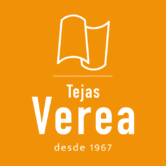Constructions of new plant for public or private use and reforms or renovations in urban public spaces, completed between January 2018 and December 2020, may participate.
Tejas Verea announces the International Architecture Awards Tejas Verea Roofs, in collaboration with the Official College of Architects of Galicia, with the aim of distinguishing more efficient and sustainable works or solutions on roofs made with Verea ceramic tiles.
The contest is aimed at architecture professionals and in this first edition it will distinguish works completed between January 2018 and December 2020 with a sloping ceramic tile roof. Those that have been installed using the Verea System will be valued positively.
Professionals, senior architects or collegiate technicians who carry out their activity on their own, in private companies or in public institutions both in Spain and abroad, as well as professional architecture or technical architecture societies, may submit a candidature.
Regarding the works, those of a new plant for public or private use and reforms or renovations in urban public spaces may participate. The contest will choose the best two from among all those presented and will award two different prizes: a New Construction Prize, worth 3,000 euros, and a Rehabilitation Prize, for the same value.
Those interested will have a deadline for registration and presentation of documentation from today, April 13, until Friday, September 17, 2021, before midnight.
To register or consult the rules of the Award, a specific section has been set up on the website www.tejasverea.com

Ceramic roof tile, a natural product
The roof tile is a product that is born of nature, since it is the combination of earth, water, air and fire. During the manufacturing process it acquires durability and thermal insulation properties that make it the best option for roofing. In addition, it is a circular economy product since at the end of its life cycle it can be 100% recycled.




